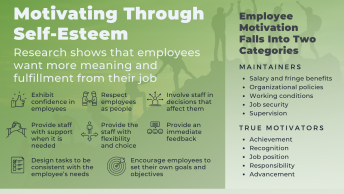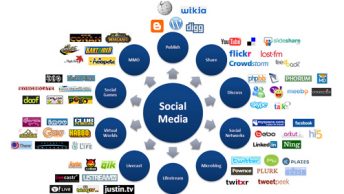
An organization is all about customer satisfaction. Companies understand this and focus all their energy on their service or customer experience. However, many companies do this at the cost of employee experience. What does this mean? Is customer satisfaction not the priority?
It is! But it is important not to lose sight of people who deliver the end product or service to the customers – the employees. These are the people that need a proper support system. Employee satisfaction is paramount as this is what will determine the success or failure of a company. When employees are satisfied and happy about working in an organization, the customer is the first person to notice that.
With employees getting thin-skinned every day, it depends completely on the employer to ensure they do not have their top talent drained away by the new competitor on the block. In the current scenario, the decision of hopping by the employee is triggered by the minutest of issues, such as being ticked off in a not too friendly tone or even an uneasy office environment.
It becomes important to be aware and understand the signals that are given out by the employees. The management will do well to catch them before it is too late and the employee makes the decision to quit. This understanding gives the employers an edge and gives them the time to take corrective measures if necessary, in order to prevent talent loss. It could be that the employee is not happy with the environment or is suffering from a relationship issue with a colleague or a superior. These issues need to be handled before they get out of hand.
How do employers understand their employees? How do they know what employees want? How do they map their satisfaction levels? There are several ways of mapping employee satisfaction.
Surveys: This is a traditional method that involves employees’ participation. Employers create surveys that have questions on the different parameters related to the organization. They put forth questions in such a way that every aspect of an organization is touched and the feedback is returned in the form of an opinion given by each employee. This helps employers understand how employees think and their satisfaction levels, and paves the path for problem solving. These surveys can actually identify problem areas and help come up with solutions to solve the problems. They reveal the employee attitude on the whole.
One-on-One Interviews: A non-conventional tool, this involves discussions with every employee on a one-to-one basis every few months. Their thoughts are recorded and trouble parameters identified and taken care of.
Exit Interviews: This comes into action after an employee submits his resignation papers. The problem with exit interviews is that most employees, once they decide to leave, are not forthright. In an attempt to keep good relations with the employer, they usually do not tell-all as they ought to. Many of them in fact give personal reasons for leaving and make the employer feel that all is well on the work front.
There are several benefits of mapping employee satisfaction:
Employee’s perspective: Employers get a clear understanding of their policies, benefits, compensation etc. from the perspective of the employees.
Loyalty: Employers are given a chance to identify problems and come up with solutions. This attempt is looked at by the employees as supportive and motivates them to work hard and be loyal to the organization.
Employee Need Assessment: An insight into employee opinions helps organizations provide the necessary training for the professional development of the employees.
Better Customer Service: As the employees feel important and satisfied that the management is looking after them, the results will be seen in better customer satisfaction, which is what an organization is all about.
Employers who fail at HR and see high attrition rate are those that consider monetary compensation as highly important. In spite of the fact that employees work for money, emotional rewards go a long way at keeping the employer-employee relation strong and have a larger impact on employee satisfaction. Tracing and improving this satisfaction level has to be top priority for the HR department of an organization.
Employee satisfaction mapping can be the key to a better motivated and loyal workforce that leads to better organizational output in the form of better products and services and results in overall improvement of an organization.











[…] recently came across an article that recapped basic business wisdom regarding the value of assessing employee satisfaction. […]
Interesting article, Hasan. You cover the three basic areas of measuring employee satisfaction, which is inarguably an important process and metric to use in business management. However, I would argue that there is an additional alternative approach, which entails having employees evaluate and critique their management and the operations of the company. Properly done (and the methodology used is of course critical in this), this process sets self-assessed measures of employee satisfaction at the same time it provides insights about sources of dissatisfaction.
I’ve written about this in an article at my own website. I welcome your comments on it. You can see it here: http://www.deborahteramischristian.com/passions/leftbrain/processes/employee-satisfaction
regards,
-Teramis
Interesting article, Hasan. You cover the three basic areas of measuring employee satisfaction, which is inarguably an important process and metric to use in business management. However, I would argue that there is an additional alternative approach, which entails having employees evaluate and critique their management and the operations of the company. Properly done (and the methodology used is of course critical in this), this process sets self-assessed measures of employee satisfaction at the same time it provides insights about sources of dissatisfaction.
I’ve written about this in an article at my own website. I welcome your comments on it. You can see it here: http://www.deborahteramischristian.com/passions/leftbrain/processes/employee-satisfaction
regards,
-Teramis
@Deborah – Thanks for the reference.
@Deborah – Thanks for the reference.
Any business and company’s success is in the hand of their employees. If they are sincere to you you will get extra work. However closely examining the employees behaviour will result in a satisfaction and sincerity.
Any business and company’s success is in the hand of their employees. If they are sincere to you you will get extra work. However closely examining the employees behaviour will result in a satisfaction and sincerity.
Great read interesting. I have to say that if you have happy staff you have more productivity from them and this is a good thing the more you give the more you get back in return, just some thing to think about.
Great read interesting. I have to say that if you have happy staff you have more productivity from them and this is a good thing the more you give the more you get back in return, just some thing to think about.
Great article you have here…
The economical crisis is causing many problems for employees and the main problems is stress. Stress can kill you literally. Stress causes psychological discomfort and of course a lot of heart problems that can be related to other major medical problems. That is why I recommend all employers to try and reduce the stress on their employees. It's good for the company in the long term.
what does this have to do with anything?!